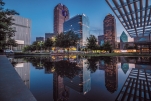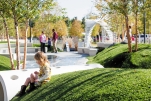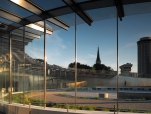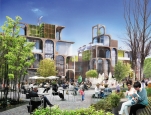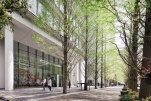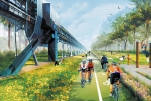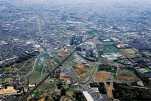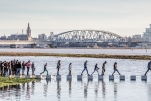
Dutch Bridge Plays with High Water
Zalige bridge by Next Architects turns high water into attraction. The Dutch know how to live with water. The Zalige Bridge by Next Architects i.c.w. H+N+S Landscape Architects has become the proof of this. The bridge is slowly submerging under the rising water and is reachable only through stepping stones. It became the ultimate place to experience the high water. In the dutch city of Nijmegen, where the bridge is located, water levels of 12,0 m NAP+ are being measured. Such height was reached only once in the last 15 years. In the past this would have been a threat, but now the high water became an attraction.




